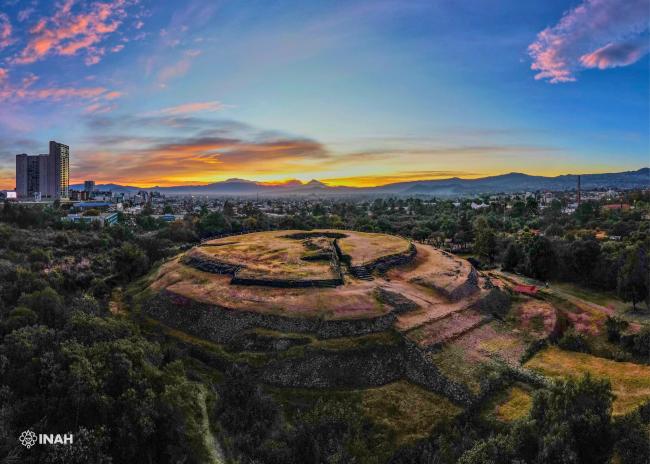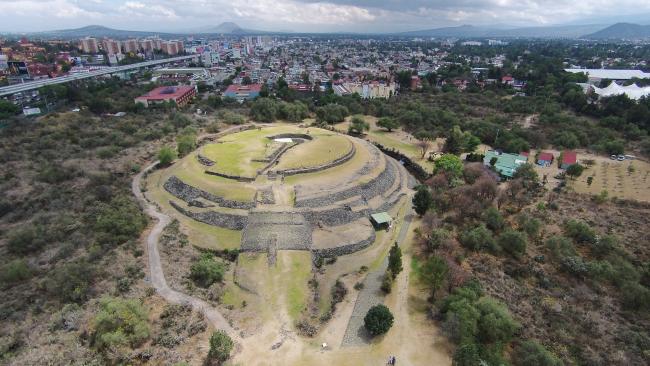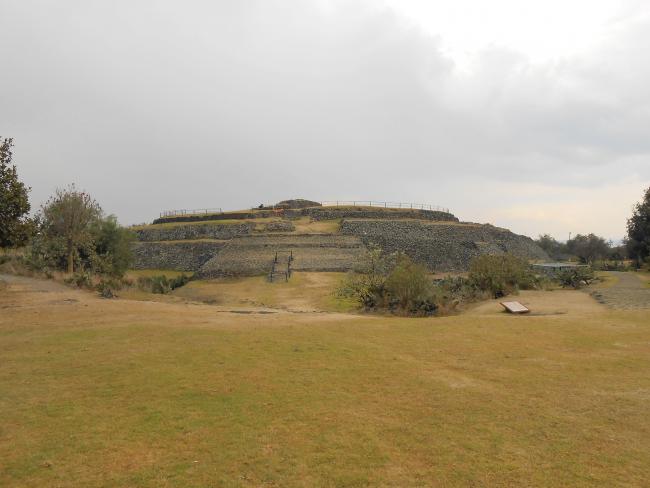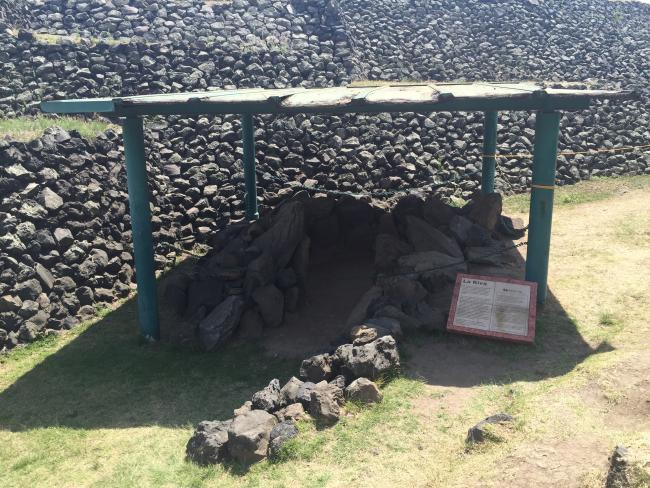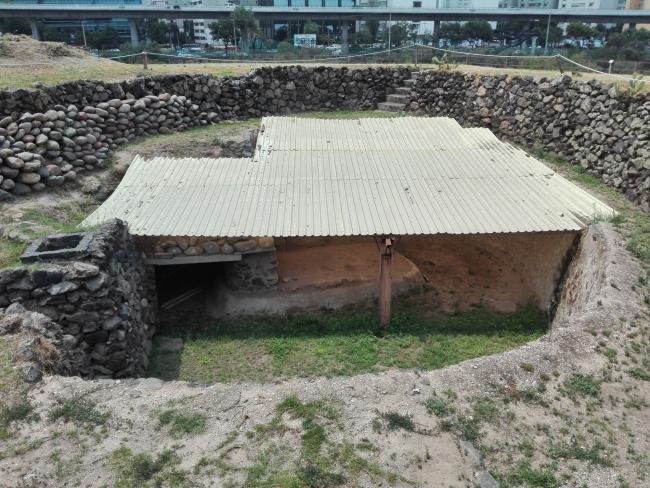
Cuicuilco A
Estructura
It is the best known complex of Cuicuilco and to which the entire site owes its name. It consists of the Great Circular Basement, the Altars, Kiva, Building E-1, and the Stela.
Great Circular Basement: This building was built between 800 and 150 B.C. through successive extensions, of which we know of at least eight. Its enormous surface allowed the attendance of large groups of people to religious ceremonies in the upper part of the basement. The two access ramps, located to the east and west, are aligned with the equinoxes, as are the central altars dating from different periods. Formed with unworked volcanic stone, weighing more than 30 kg, joined without lime mortar, surrounding a central core of compacted earth 110 m in diameter and 25 m in height.
The Kiva: Structure with ceremonial functions, built around 150 B.C. with large slabs of volcanic stone, called andesite, and river pebbles. The interior was decorated with linear designs painted with hematite red (iron oxide), making it one of the earliest examples of architectural painting.
Structure E1: Here a burial was found that contained, in addition to the skeleton, an offering with ceramic objects, a necklace and two figurines representing a man and a woman. Its construction dates from the Late Preclassic period (400 B.C.-200).
In the southern half there is the platform of an earlier, smaller building, which was covered when E-1 was built.
The Stela: It is located to the south of the Great Basement. It is an adesite monolith, almost 4 m high with a rectangular prism shape. In the north face it presents carved motifs that constitute one of the earliest known ideographic registries. In the upper part there is a vertical series of three rhombuses and underneath two parallel series of eight convex circles. It seems that the Stela is the first known representation of the axis mundi (the axis of the world), a sacred element that is located in the center of the world and communicates the three planes of the universe: the underworld, the earth's surface and the heavens.
The Altars: At the center of each one of the surfaces corresponding to the extensions or epochs of the Great Basement, semirectangular altars of low height were located, between 0.40 m and 1.30 m on an east-west axis. These constructions were protected by shrines of perishable material. Four of the altars belong to the first three constructive stages of the building, they are made of compacted earth and painted with red pigment (cinnabar), an element of great ceremonial importance. The fifth altar is made of river pebbles and the last one possibly of volcanic stone. The existence of several more altars has been demonstrated, although only the upper half of the building has been explored.


